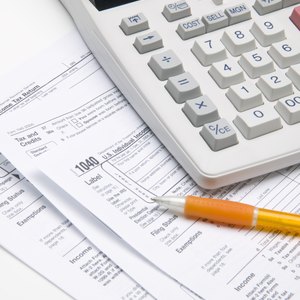
The number of exemptions claimed on the IRS W-4 determines the amount of money your employer will withhold from your paycheck to cover federal income taxes. For a single person, the starting point is one exemption, but you can change that number based on personal financial circumstances.
Standard W-4 Answers
When you start a job, the employer will have you fill out a W-4 form to declare your tax filing status. As a single male, the basic entry would be to mark the single box and put down one exception on line 5 of the form. Your employer will then use that information along with charts from the IRS to determine how much money they will withhold from your paycheck and send to the federal government as your income tax payments.
Changing Number of Exemptions
When you file your tax return, your actual tax bill is calculated. The money that you have paid in taxes throughout the year will be subtracted from what you owe, and if you have paid more than you owe, you receive a refund. Increasing the number of exemptions using a W-4 lowers the amount held from your check, giving you more take home pay and a smaller tax return check. A single person can also choose to enter zero exemptions on line 5, which would result in more money coming out of each check and producing a larger tax return amount.
References
Writer Bio
Tim Plaehn has been writing financial, investment and trading articles and blogs since 2007. His work has appeared online at Seeking Alpha, Marketwatch.com and various other websites. Plaehn has a bachelor's degree in mathematics from the U.S. Air Force Academy.

